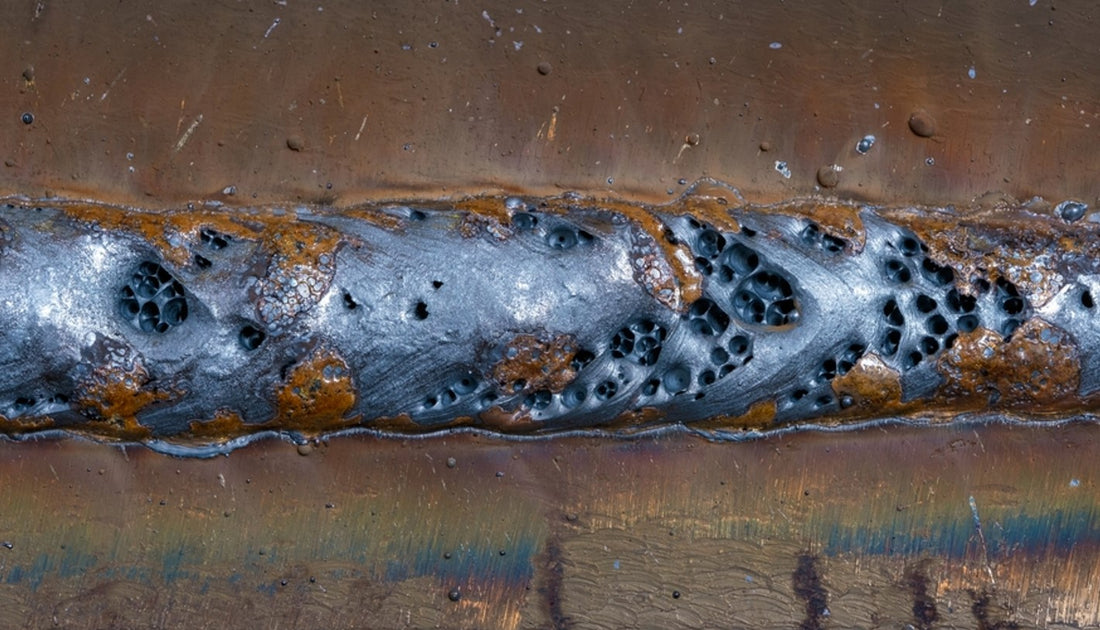Discover What is Porosity in Welding and Its Result on Structural Integrity
Porosity in Welding: Identifying Common Issues and Implementing Best Practices for Avoidance
Porosity in welding is a prevalent concern that usually goes unnoticed till it causes significant issues with the stability of welds. This typical problem can jeopardize the toughness and longevity of bonded structures, posing safety threats and leading to pricey rework. By recognizing the root creates of porosity and executing reliable prevention strategies, welders can substantially improve the top quality and dependability of their welds. In this discussion, we will discover the vital variables contributing to porosity development, examine its damaging results on weld efficiency, and go over the best practices that can be adopted to reduce porosity incident in welding procedures.
Typical Root Causes Of Porosity

One more regular wrongdoer behind porosity is the existence of contaminants externally of the base steel, such as oil, grease, or rust. When these pollutants are not efficiently removed before welding, they can vaporize and become caught in the weld, triggering issues. Furthermore, utilizing dirty or wet filler materials can present pollutants into the weld, adding to porosity issues. To alleviate these typical reasons of porosity, thorough cleaning of base metals, correct securing gas choice, and adherence to optimal welding criteria are crucial methods in achieving top notch, porosity-free welds.
Effect of Porosity on Weld Quality

The existence of porosity in welding can dramatically jeopardize the structural honesty and mechanical residential properties of welded joints. Porosity develops voids within the weld metal, damaging its general strength and load-bearing capacity.
Welds with high porosity levels have a tendency to display lower effect strength and minimized capacity to flaw plastically before fracturing. Porosity can restrain the weld's ability to successfully transmit forces, leading to early weld failure and potential security dangers in vital frameworks.
Best Practices for Porosity Avoidance
To boost the architectural stability and high quality of bonded joints, what details procedures can be applied to lessen the event of porosity during the welding procedure? Porosity prevention in welding is important to make certain the honesty and stamina of the final weld. One reliable technique appertains cleaning of the base metal, removing any kind of impurities such as rust, oil, paint, or dampness that could result in gas entrapment. Making certain that the welding devices is in good condition, with helpful hints tidy consumables and proper gas circulation prices, can likewise significantly decrease porosity. Additionally, keeping a secure arc and controlling the welding parameters, such as voltage, present, and take a trip speed, helps develop a regular weld pool that lessens the danger of gas entrapment. Utilizing the appropriate welding strategy for the details material being bonded, such as readjusting the welding angle and weapon setting, can even more prevent porosity. Regular assessment of welds and prompt removal of any type of concerns identified during the welding procedure are necessary practices to stop porosity and produce high-grade welds.
Value of Appropriate Welding Strategies
Carrying out appropriate welding methods is extremely important in ensuring the structural honesty and top quality of welded joints, building on the structure of reliable porosity prevention procedures. Welding strategies straight influence the general strength and sturdiness of the bonded structure. One key aspect of proper welding methods is maintaining the appropriate warmth input. Extreme heat can cause increased porosity as a result of the entrapment of gases in the weld pool. Alternatively, insufficient warmth may result in insufficient blend, creating possible powerlessness in the joint. In addition, using the appropriate welding criteria, such as voltage, existing, and travel rate, is important for achieving sound welds with minimal porosity.
Moreover, the choice of welding process, whether it be MIG, TIG, or stick welding, should align with the particular needs of the project to make certain optimal outcomes. Correct cleansing and preparation of the base steel, in addition to choosing the ideal filler product, are likewise necessary elements of skillful welding methods. By sticking to these finest techniques, welders can minimize the threat of porosity development and produce top quality, structurally sound welds.

Evaluating and High Quality Control Measures
Quality assurance measures play an important function in confirming the honesty and dependability of bonded joints. Checking procedures are important to detect check my source and stop porosity in welding, making certain the strength and toughness of the last item. Non-destructive testing methods such as ultrasonic testing, radiographic screening, and aesthetic examination are frequently discover this info here utilized to identify prospective problems like porosity. These strategies allow for the assessment of weld high quality without endangering the stability of the joint. What is Porosity.
Post-weld assessments, on the other hand, analyze the final weld for any type of flaws, consisting of porosity, and validate that it meets defined standards. Applying an extensive quality control plan that includes extensive screening treatments and inspections is paramount to minimizing porosity issues and making certain the overall high quality of welded joints.
Conclusion
In final thought, porosity in welding can be an usual concern that affects the high quality of welds. By determining the usual causes of porosity and executing ideal practices for avoidance, such as appropriate welding techniques and screening actions, welders can make sure premium quality and reputable welds. It is crucial to prioritize avoidance approaches to decrease the event of porosity and preserve the stability of welded structures.